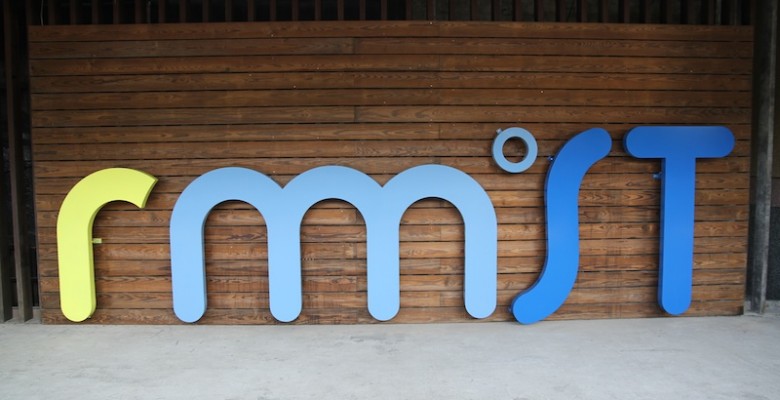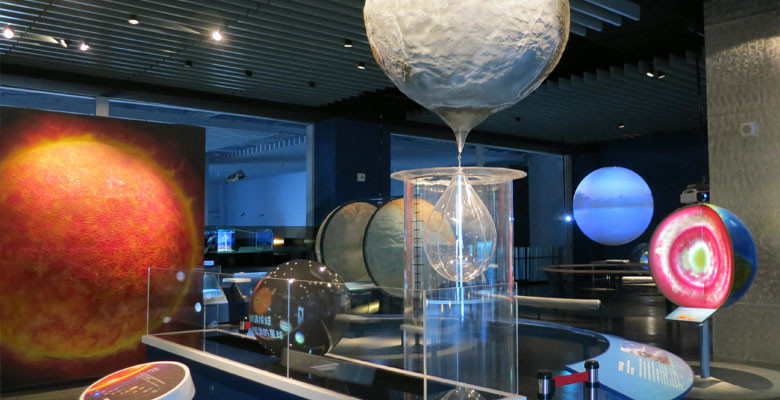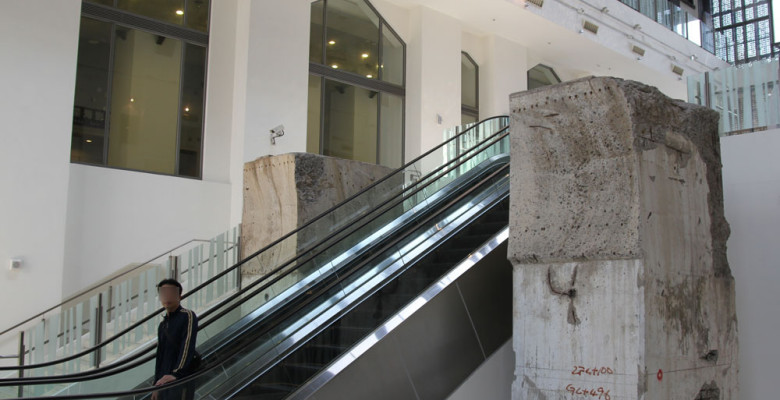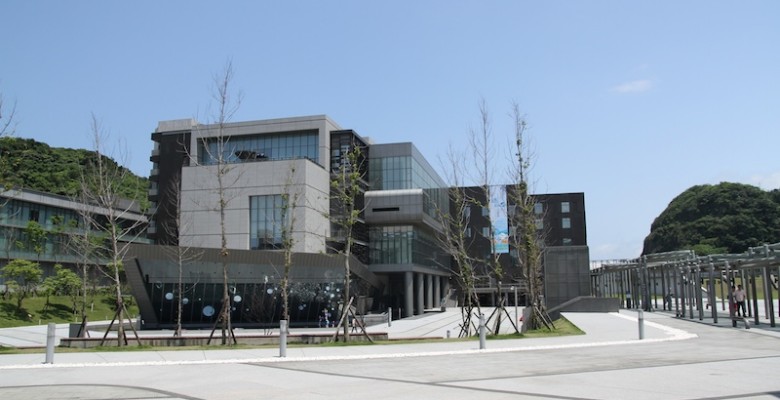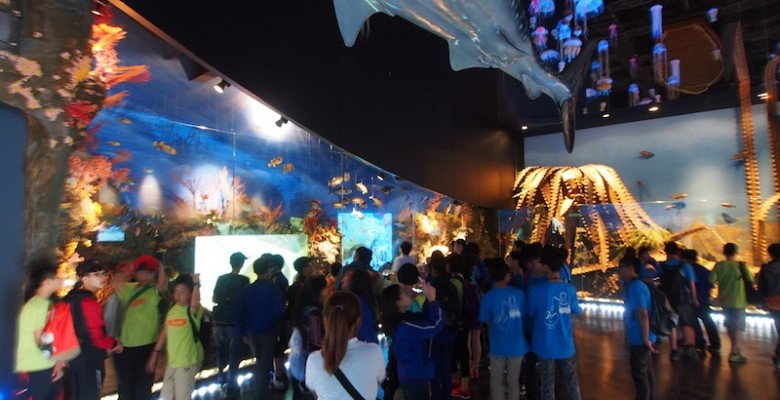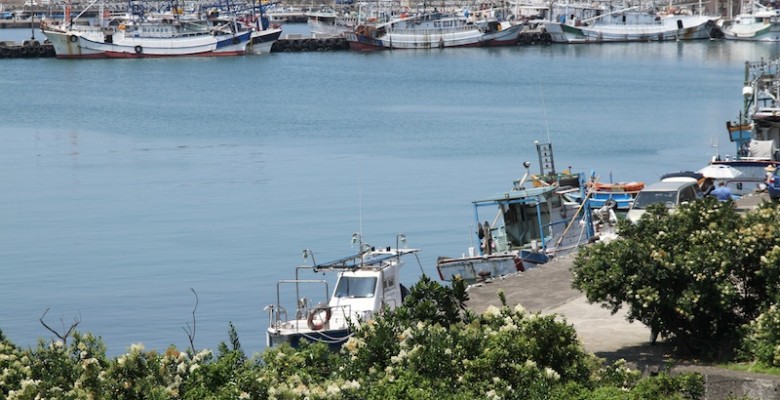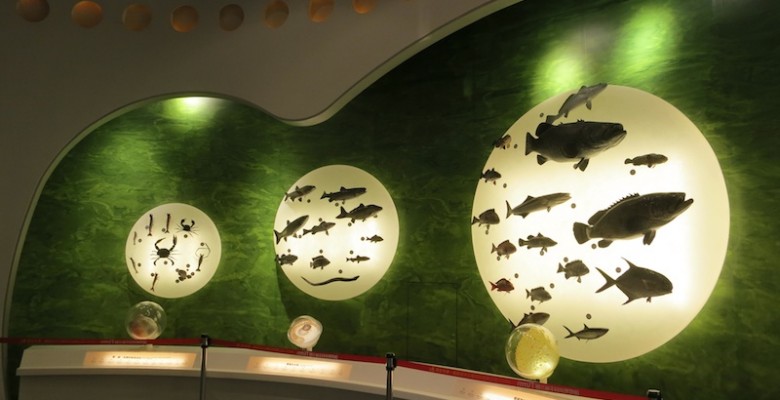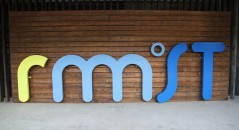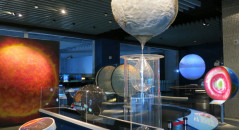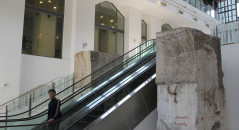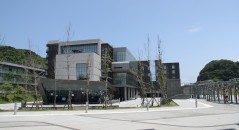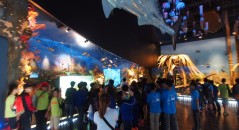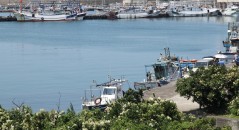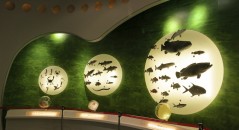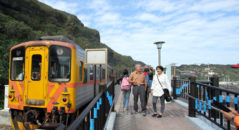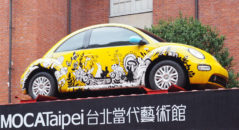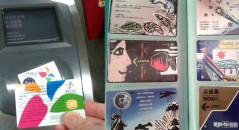There has been a trend of renovating old industrial sites into cultural “parks” in Taiwan over the past few years (for example Songshan Cultural Park and Huashan), and the newest museum in Taiwan (it was opened in January 2014 at a cost of over NT$5.5 billion), the National Museum of Marine Science & Technology is another fine example. In fact, this is a project of enormous proportions, and the old coal power station has truly been re-energised since it closed in 1981.
There are currently three main buildings; the main exhibition building (which used to be the power station), an iMax theatre, and a Regional Exploration Building. As the area is fittingly right next to the ocean, you can smell the sea (in a good way), and the sea breeze keeps it cooler than in downtown Taipei. There is plenty of space between the buildings which is great for the kids to run around, and there is plenty of outdoor seating.
Stepping back you can still see the basic outline of the power station, and inside two pillars at the base of the escalator to the third floor are a reminder of the history of the building. Other parts of the steel structure has been preserved, and you may spot a couple of rebuilt coal hoppers inside. Apart from that, however, the interior is new and a glittering, spacious, modern example of how Taiwan can get a renovation project totally right. A huge effort has been made to let light into the building, and it works very well.
There are eight main areas to the exhibition building: Deep Sea Theater, Naval Architecture and Ocean Engineering, Marine Science, Marine Environment, Kid’s Exploration Zone, Wonders of the Deep Sea, Fishery Science and People and the Sea.
Each gallery is distinct, and the layout of each makes the most of their considerable space very well. In fact, each gallery could be a museum in its own right. There seem to be little exhibits hidden everywhere around the main halls, and the huge number of younger visitors expected to visit should have an amazing time. There are also many places to sit and watch films, although these were all in Chinese.
The exhibits are very well done, from divers suspended from the ceiling, boats coming out of the wall, giant wall sized maps activated from a map on the floor, life-sized mangrove ecosystem, and science based exhibits such as how much salt would be obtained if all the ocean water evaporated (a covering of 150 m) on a scale with Taipei 101.
The Wonders of the Deep Sea gallery is as dark and cool as you would expect of the deep sea, and the earthquake simulator is as disturbing as being in the real thing. I should repeat that it is “cool”, in fact the whole building is very cool, and if you have been outside during the summer you will know what a bonus that can be.
All of the galleries are worth visiting if you have time. The use of space is excellent, and the number of screens, projectors, and hands on displays is quite incredible. A large globe hanging from the ceiling on which video was projected was particularly impressive.
Most of the textual displays are in Chinese, English and Japanese, although most of the video displays are in Chinese only. Nevertheless, a member of staff went out of their way to help translate one interactive video display. In fact the staff were all very attentive, friendly, and knowledgable. It makes such a difference I think when staff really seem to enjoy their job, and everyone here gave me that impression, from the ticket desk through the exhibition staff to the restaurant.
When you get peckish there is a restaurant inside with fair, general type food (fish and rice, chicken and rice etc.), a Family Mart convenience store with some seating, and an outdoor cafe area by the iMax cinema just across from the main exhibition building. Speaking of which, tickets to the iMax cinema are extra (around NT$100), and shows start every hour. There is also a large, marine-themed play area for children (under 10 years of age) in the main exhibition building which looked like a lot of fun. They wouldn’t let me try the slide, but it looked good.
The museum is located in Keelung to the north of Taipei (Google map), and it is very easy to get there. By train, change at Ruifang station (about 45 minutes from Taipei Main Station) and take the dedicated train to the museum (10 minutes) on a piece of track especially renovated for the museum (the Shen’ao Line used to take coal to the power station and this line was called the Shen’ao line). You can’t miss the huge logo of the museum on the platform at Ruifang, and the museum station is written as Haikeguan. You can actually use an Easycard for the whole journey, which costs NT$50. Yes, really.
Entry to the main exhibition building costs NT$140 for children aged 6 to 12 years, NT$100 for those over 65 years, free for those under 6 years, and NT$200 for everyone else. iMax tickets are extra. Both the museum and iMax cinema open at 9am and close at 5pm. I strongly recommend getting here early as there is a lot to see and do. In fact, I haven’t even touched on the park, trail, Regional Exploration Building, and small harbour which are all part of this new and expanding site (and are worth another visit). I spotted one map with a planned aquarium (which should be finished in 2018), so it looks like there is more to come.
Overall, I have to say that this is the best overall museum experience I have had, certainly the best in Taiwan, and I strongly recommend a visit. It makes for a really good day out for all the family considering you can also explore the coast, go hiking, watch an iMax movie, and visit the museum, and you will all almost certainly learn something new about the seas.
For more photos from the National Museum of Marine Science & Technology check out our Flickr page. and let us know what you think in our forums.

